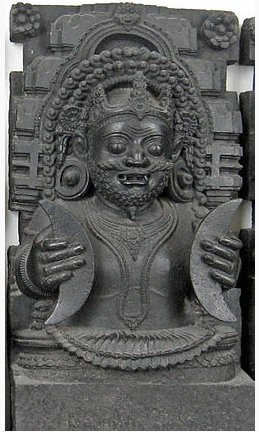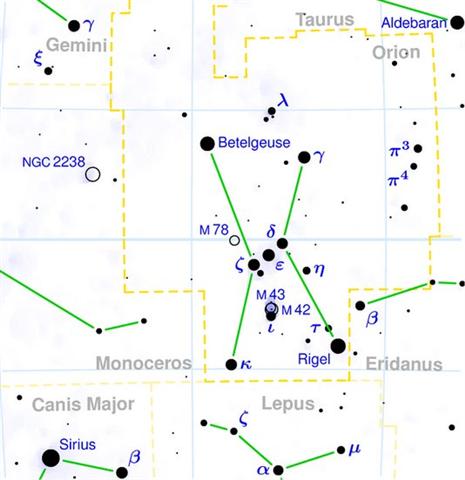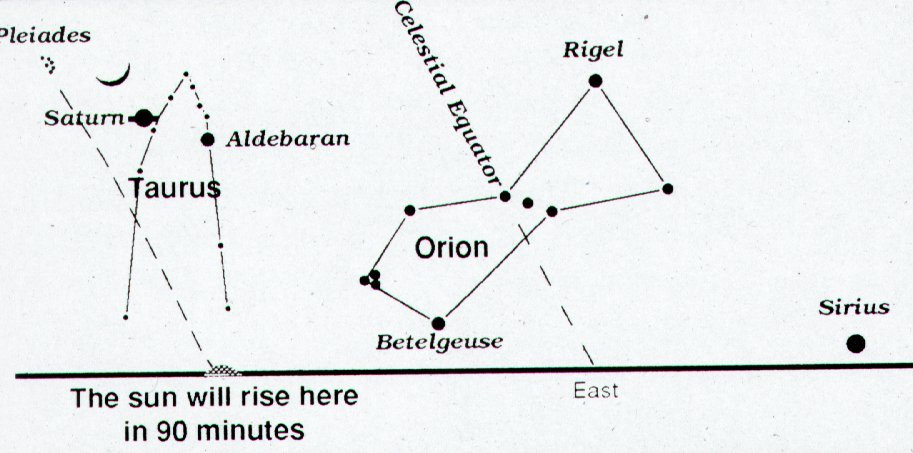Looking again at the Hindu nakshatra stations according to Wikipedia, to make sure my numbers for the first 13 of them are correct, I discover a relevant piece of information regarding Rahu (who comes into focus in my next page below). The piece is given in form of a Sign. My list has number 25 (as in Saturn) for the station in Aquarius:
But according to Wikipedia its number is 24 which is the same as the preceding station in the Dolphin constellation. This disorder causes the last nakshatra to be number 27 instead of my 28. The Sign means there is a gap, a hole, a 'zero', at γ Aquarii (Sadachbia). This dark spot was ruled by Lord Rahu. He also ruled the 6th station at Betelgeuze and the 15th at Arcturus:
The conclusion is that there were 3 gaps in the flow of time. Now to my efforts to explain the G glyph text:
... In Hindu tradition, Rahu is a cut-off head of an asura, that swallows the sun or the moon causing eclipses. He is depicted in art as a serpent with no body riding a chariot drawn by eight black horses ... According to legend, during the Samudra manthan, the asura Rahu drank some of the divine nectar. Sun and moon realized it and they alerted Mohini (the female avatar of Vishnu). Before the nectar could pass his throat, Mohini cut off his head. The head, however, remained immortal. It is believed that this immortal head occasionally swallows the sun or the moon, causing eclipses. Then, the sun or moon passes through the opening at the neck, ending the eclipse ...
83.4 at Heka is redmarked because this ought to be the correct fraction of a right ascension day for the early part of the Arab table (viz. 0.4). My precision from the methods used for deriving my own value (83.2) is not good enough to correct 83.4 to 83.2 or to some other value. φ▓ Orionis (83.6) is approximately at right ascension day 84, but I have truncated the fractions when assigning dates. Therefore I have assumed the White Spot (Al Hak'ah) in rongorongo times rose together with the Sun in June 12 (163 = 80 + 83). Although the midline of Orion is at the equator of the sky (declination 0║) the undulating ecliptic path of the Sun (and all the other planets) today goes above Orion close to right ascension 6h (midsummer).
At the opposite side of the year in the night sky of the northern midwinter the brilliant Orion can be seen high up, but in summer Orion is low down. At that time on Easter Island, however, Orion was visible in the nights of the southern winter.
The Heka triplet is where we otherwise would have expected to see a bright single star representing Orion's head (when looking from a location in the northern hemisphere). ... Al Maisān, the title of γ Geminorum, by some error of Firuzabadi was applied to this star [λ Orionis] as Meissa, and is now common for it. Al Sufi called it Al Tahāyī; but Al Ferghani and Al Tizini knew it as Rās al Jauzah, the Head of the Jauzah, which it marks. The original Arabic name, Al Hak'ah, a White Spot, was from the added faint light of the smaller φ╣and φ▓ in the background, and has descended to us as Heka and Hika. These three stars were another of the Athāfiyy [tripods used for cooking] of the Arabs; and everywhere in early astrology were thought, like all similar groups, to be of unfortunate influence in human affairs. They constituted the Euphratean lunar station Mas-tab-ba-tur-tur, the Little Twins, a title also found for γ and η Geminorum; and individually were important stars among the Babylonians, rising to them with the sun at the summer solstice, and, with α and γ, were known as Kakkab Sar, the Constellation of the King ...
... λ and the two stars phi furnish an easy refutation of the popular error as to the apparent magnitude of the moon's disc, Colas writing of this in the Celestial Handbook of 1892: In looking at this triangle nobody would think that the moon could be inserted in it; but as the distance from λ to φ╣ is 27', and the distance from φ╣ to φ▓ is 33', it is a positive fact; the moon's mean apparent diameter being 31' 7''. This illusion, prevalent in all ages, has attracted the attention of many great men; Ptolemy, Roger Bacon, Kepler, and others having treated of it. The lunar disc, seen by the naked eye of an uninstructed observer, appears, as it is frequently expressed 'about the size of a dinner-plate', but should be seen as only equal to a peppercorn ... From the rare total eclipse events it can be concluded that the face of the Sun is approximately of the same size as that of the Full Moon. The White Spot can therefore cover also the eye of the Sun.
| |||||||||||||||||||||||||||||||||||||||||||||||||||||||||||||||||||||||||||||||||||||||||||||||||||||||||||||||||||||||||||||||||||||||||||||||||||||||||||||||||||||||||||||||||||||||||||||||||||||||||||||||||||||||||||||||






